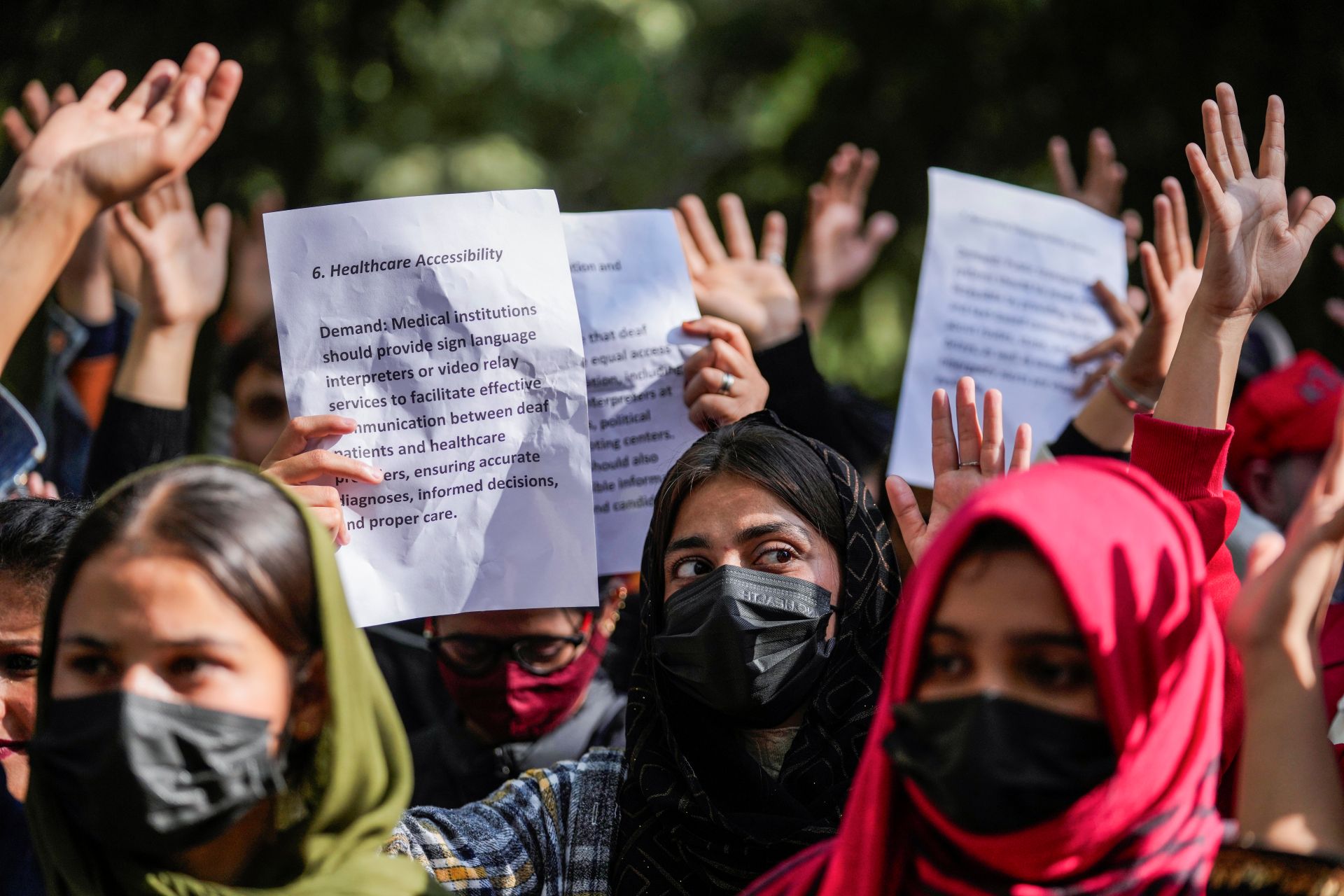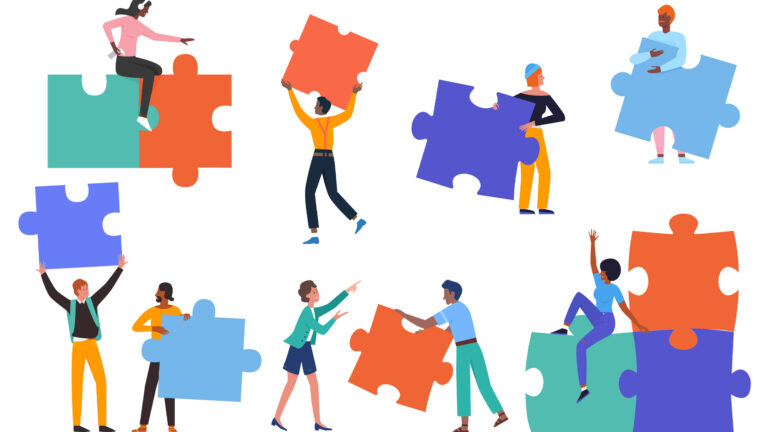Canada is often regarded as a champion of progress, equality and sustainable growth. Yet a glaring paradox persists: more than 1 billion people – roughly one in six globally – live with a disability, and their needs remain woefully under-represented in global development agendas.
With international aid resources increasingly constrained following reductions in funding to the U.S. Agency for International Development, or USAID, the humanitarian sector faces growing pressure precisely when needs are rising. At this pivotal moment, Canada must ensure that disability is a fundamental pillar of effective, equitable and sustainable international development.
USAID cuts and the consequences for vulnerable populations
The persistent gap between persons with disabilities and their non-disabled peers highlights the failure of the global development community to uphold its promise to “leave no one behind.” The sustainable development goals (SDGs) aimed at advancing the rights and opportunities of persons with disabilities are falling short: progress has been insufficient for 30 per cent of the goals and for 14 per cent, progress has stalled, regressed or the targets have been missed entirely.
Official development assistance supporting persons with disabilities remains woefully inadequate, accounting for less than two per cent of total aid – approximately US$3.2 billion – an alarmingly low figure given the scale of need. Furthermore, the data highlights that persons with intellectual disabilities are almost entirely excluded from aid projects, according to the Organization for Economic Co-operation and Development.
These challenges are compounded by the 2025 cuts to U.S. international aid. Similarly, other western countries have reduced aid while increasing defence spending.
Vulnerable groups, especially women and children with disabilities, are being left behind. Nearly half of the world’s 240 million children with disabilities have never attended school, and they are 42 per cent less likely than their peers to acquire basic reading and numeracy skills.
Women with disabilities face higher rates of gender-based violence, with 40 per cent to 68 per cent experiencing sexual violence before the age of 18, and they have limited access to sexual and reproductive health services. They are also frequently excluded from funding programs, leadership positions and decision-making spaces, leaving them largely invisible.
Canada needs to change the focus of its education aid to South Asia
Within months of implementation, the USAID cuts have begun affecting international organizations. A study by Humanity & Inclusion of 1,280 refugees with disabilities across eight camps in Uganda found that 42 per cent of households with children with disabilities and 35 per cent of individuals with disabilities were entirely excluded from food assistance.
Persons with disabilities also face stark economic exclusion. Globally, employment levels average 36 per cent for persons with disabilities compared with 60 per cent for those without. In low- to middle-income countries, over 80 per cent are unemployed. Exclusion from education and employment not only limits individual opportunity but also imposes economic costs – reducing growth, innovation and social cohesion.
The scale of exclusion makes clear that the U.S. aid cuts will extend far beyond budgets. They threaten the survival and dignity of millions, pushing individuals deeper into poverty while depriving economies of the contributions that persons with disabilities can make.
Canada and disability-inclusive aid
Amid worsening humanitarian crises, global conflicts and declining international aid, Canada has the opportunity to demonstrate leadership. The Liberal government, led by Prime Minister Mark Carney, ran on a platform committed to international aid, multilateral co-operation and upholding international law – commitments that now require concrete action.
Fiscal choices illustrate a gap between promises and reality. Canada’s international assistance budget declined to $803 million in 2023-24 from $1.29 billion in 2022–23, while military spending in 2025-26 is expected to rise sharply by $9 billion, bringing Canada’s defence spending to two per cent of GDP, with plans to reach five per cent by 2035.
Ministerial mandate letters have repeatedly called for increased efforts to include persons with disabilities in development programs. Studies by the parliamentary committee on foreign affairs and international development in 2023 and 2024 on inclusive education and sexual and reproductive health and rights of women have led to clear recommendations for greater inclusion of persons with disabilities.
Further, the Official Development Assistance Accountability Act explicitly states that Canadian aid must contribute to poverty reduction. Yet persons with disabilities – who are twice as likely to live under the poverty line, face higher illiteracy rates and experience unmet health needs – are often left out.
In 2023-24, projects identifying disability as a significant policy marker amounted to only $203.5 million – two per cent of total official development assistance – and internal evaluations reveal that many of these projects merely checked a box rather than delivered concrete benefits. The disability marker often served as a compliance exercise rather than a pathway to meaningful inclusion.
Moreover, the Auditor General’s March 2023 performance audit report, International Assistance in Support of Gender Equality, notes that Global Affairs Canada recommends better integration of intersecting identity factors, including disability, in project-level gender-equality assessments. This disconnect underscores a broader systemic issue: a lack of dedicated funding, clear accountability and practical frameworks to embed disability inclusion into the core of Canada’s aid operations.
Canada, unlike Australia, the U.K., and even the United States (before the USAID cuts), has not developed explicit policies and frameworks to promote disability inclusion in its aid programs. For example, despite Canada’s ambitious global health commitments, including a spending target of $1.4 billion annually by 2024, there remains a significant gap: little of this funding reaches women with disabilities, whose needs are too often ignored. And, although an intersectional approach is promised as part of the feminist policy-funding for gender equality, initiatives rarely prioritize their inclusion.
Good practices exist: Canada’s $100-million commitment for paid and unpaid care work supports initiatives addressing gaps in care and support systems. Yet women with disabilities must be recognized not solely as recipients of care but as decision-makers and contributors. Without clear strategies, dedicated funding and genuine inclusion, Canada’s commitments risk remaining symbolic.
Canada’s moment to lead: Recommendations
To truly uphold its commitments and honour the promise to “leave no one behind,” the Canadian government should consider the following recommendations:
- Endorse and implement the Global Disability Summit 15-per-cent commitment:
The “15 per cent for the 15 per cent” initiative – aiming for 15 per cent of all development assistance to explicitly benefit the 15 per cent of people globally living with disabilities – offers a practical, measurable target. Integrating this into Canada’s aid strategies would dedicate roughly two per cent of total official development assistance (US$7.8 billion) to disability-focused projects, benefiting millions. - Increase targeted funding and data collection:
A modest investment of $200 million over five years could transform lives, supporting accessible education, health and economic opportunities. Funding should be paired with robust, disaggregated data collection (by disability type, gender, age and location) to ensure accountability. - Incorporate disability considerations across all sectors and programs:
Disability considerations should be standard in all development sectors – education, health, economic development and humanitarian aid. Capacity-building within Global Affairs Canada and partner organizations should emphasize inclusive design, reasonable accommodations and human-rights based approaches. - Strengthen partnerships with organizations led by women with disabilities:
Meaningful inclusion requires partnership with organizations of persons with disabilities and women with disabilities in program design, implementation and evaluation. Their expertise is essential for effective, context-specific solutions.
The inclusion of people with disabilities in international development is a moral, economic and human-rights imperative. The evidence is clear: ignoring disability diminishes the effectiveness of aid, perpetuates inequality and undermines the very foundations of sustainable development











